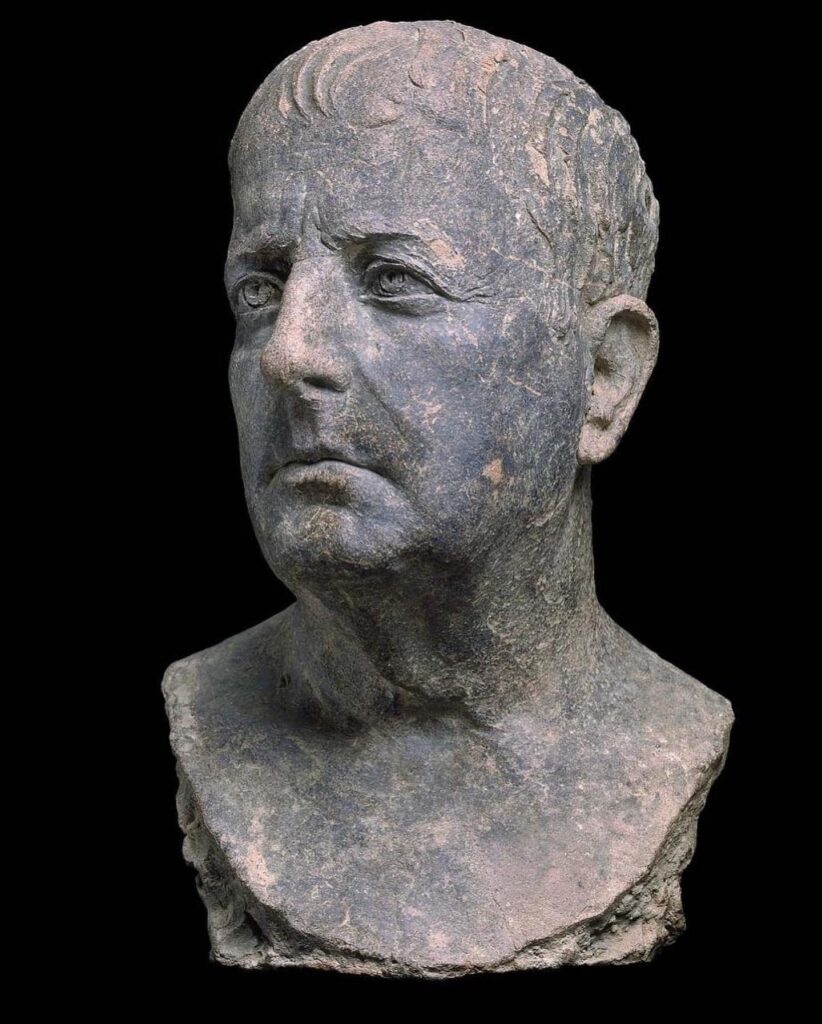One doesn’t see ancient life-sized terracotta sculptures every day, and this is perhaps the most remarkable to have survived.
This remarkable bust was found between Pozzuoli and Cumae in the 19th century and was likely produced locally during the mid-first century B.C. Art history survey courses understandably harp on about Roman ‘verism’ and the ‘warts and all’ approach that might (probably not) have been taken from an older tradition of death masks. So I won’t drone on about that.


Just look at him! Marble and bronze sculptures last longer and surely were more technically difficult to produce, but there is something absolutely captivating about this rendering in humble terracotta (reminiscent of Polykelitos’ comments on the importance of crafting the clay model for his famous bronzes).
With bold aquiline nose, slightly sagging skin, fine lines, and relatable pensive expression – he is captivating. The artists fingers are evident in the joining of the separately made nose and ears, and a sharper tool for those remarkably crisp eyes. The additive quality of clay is evident here somehow, different from the effect of carving. Somehow more human?




